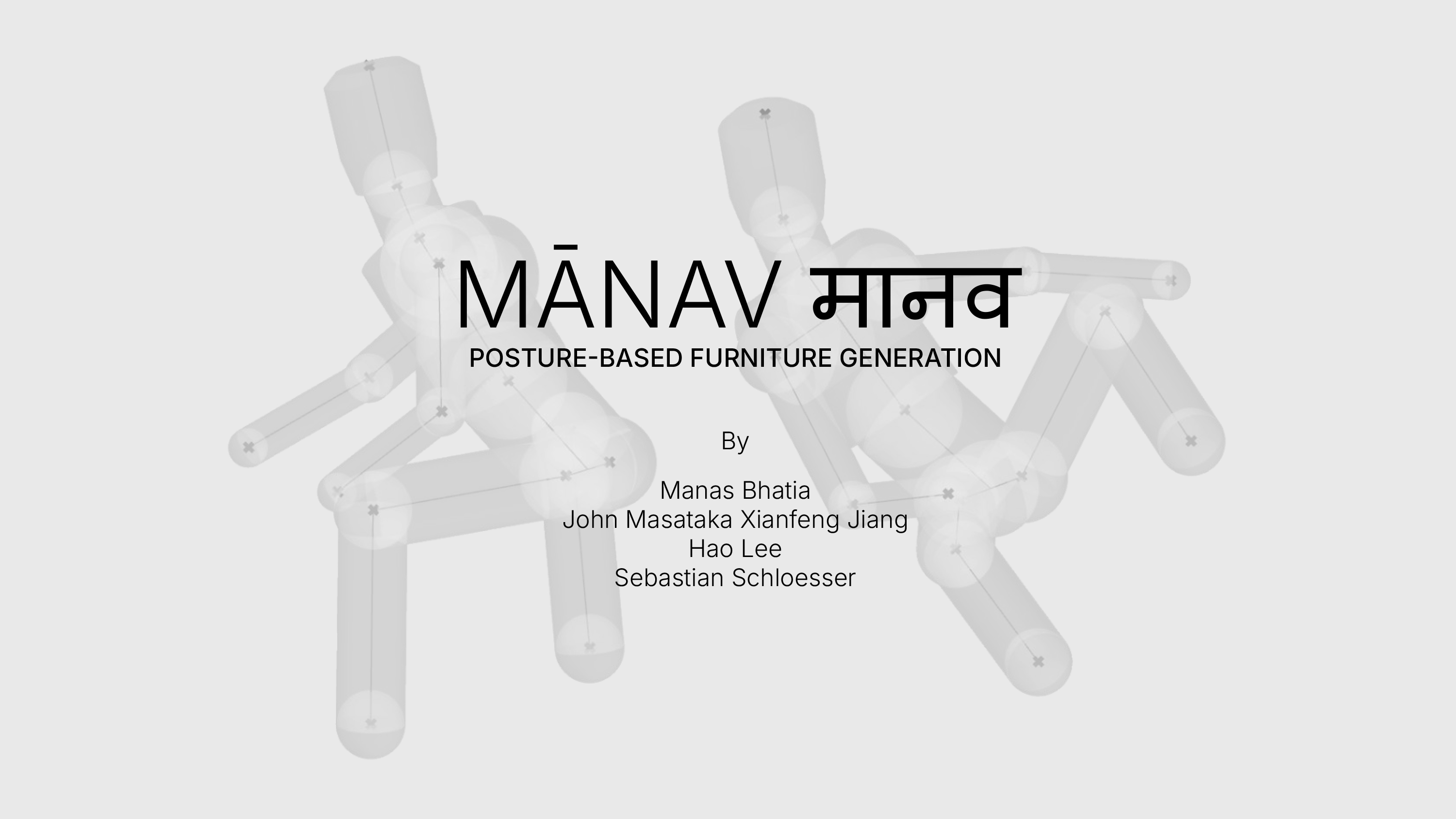
Project Name
Posture-Based Furniture Generation
Location: [Location Placeholder]
Program: [Program Placeholder]
Year: [Year Placeholder]
Team: [Team Placeholder]
Info: [Info Placeholder]
As a designer, how do you create furniture that balances ergonomic precision with aesthetic appeal? Imagine a tool that empowers you to design for any posture — no matter how conventional or extraordinary — adapting seamlessly to each user's unique needs.
What is Manav?
Manav is an innovative Grasshopper plug-in specifically designed to generate ergonomic furniture based on human postures. This tool accommodates a wide spectrum of poses, ranging from everyday positions to extreme and unconventional ones, such as handstands or mid-cartwheel. By analyzing these diverse postures, Manav creates customized furniture tailored to the specific body configurations of users, thereby offering a harmonious blend of functionality and creativity in furniture design.
Video Introduction for Manav
Key Benefits
- Rapid Prototyping: Designers and manufacturers can swiftly prototype unique furniture solutions tailored to specific users or applications. This capability significantly reduces the time and effort typically associated with traditional design processes, allowing for a more agile response to user needs.
- Customized and Adaptive Furniture: The tool empowers users to generate fully customized furniture that accommodates a wide range of postures, including unconventional ones. This ensures unparalleled comfort and support, promoting a healthier and more ergonomic interaction with the furniture.
- Inclusivity and Accessibility: By adapting to various body postures, Manav facilitates the design of more inclusive furniture options that cater to individuals with diverse physical needs or disabilities. This commitment to inclusivity enhances accessibility in furniture design, making it possible for everyone to benefit from well-designed ergonomic solutions.
Who Is It For?
Manav leverages computational methods to provide a wide array of possibilities for diverse demographics. Whether for speculative or practical purposes, artistic or functional applications, this tool fosters flexibility and innovation in furniture design, accommodating various contexts.
How Does It Work?
Manav currently consists of three main parts: posture rigging, furniture generation, and furniture analysis.
Part I: Parameterized Posture Rigging in Grasshopper
One of the most notable features of Manav is its ability to intuitively manipulate postures and body types exclusively using Grasshopper's native nodes, without relying on additional plugins. This design approach emphasizes accessibility and flexibility, allowing users to adjust poses and body types seamlessly within a custom-built mannequin tool.

Fig 1. Manav's Grasshopper logic.

Fig 2. Manav's segmented Grasshopper structure: body, chair, and analysis.

Fig 3. Manav's posture rigging with integrated body type selections.
I. Posture Slider
Manav features global, local, and individual limb controls, allowing for a comprehensive range of adjustments. It includes several preset posture types, enabling users to utilize sliders for interpolation between these poses. For the rigging of postures, we primarily employ Grasshopper's Line SDL node, applying various directional inputs to effectively generate the limbs and joints.
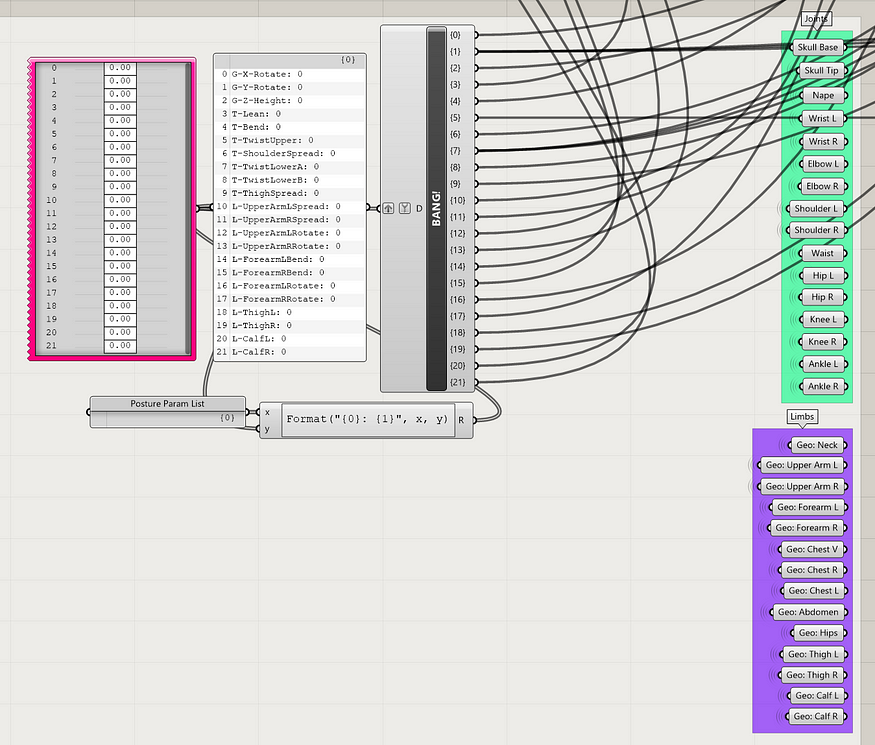
Fig 4. Galapagos' Gene Pool node enables the mannequin's pose parameters to be integrated into different chair generation methods.
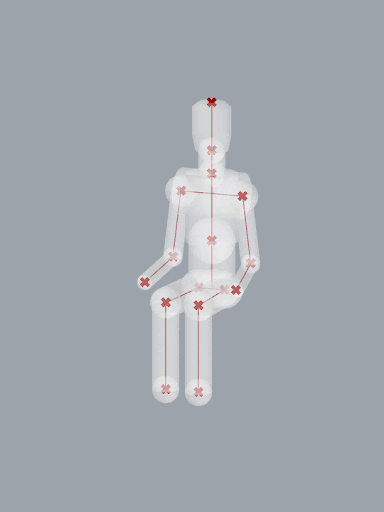
Fig 5. Posture interpolation between sitting and lying down.
The mannequin construction initiates from the hip position — a crucial point in the torso for this project — from which the remaining torso and limbs are generated. This process resembles the growth of a tree, where the trunk serves as the primary structure, and any movement or rotation of this "parent" element subsequently influences its "child" elements.
II. Body Type Selection
Manav utilizes Value List and Explode Tree (BANG!) nodes to consolidate body metrics into streamlined text files, enabling efficient data organization and accessibility within Grasshopper. All body metrics are compiled into a unified CSV file, facilitating streamlined access and analysis.
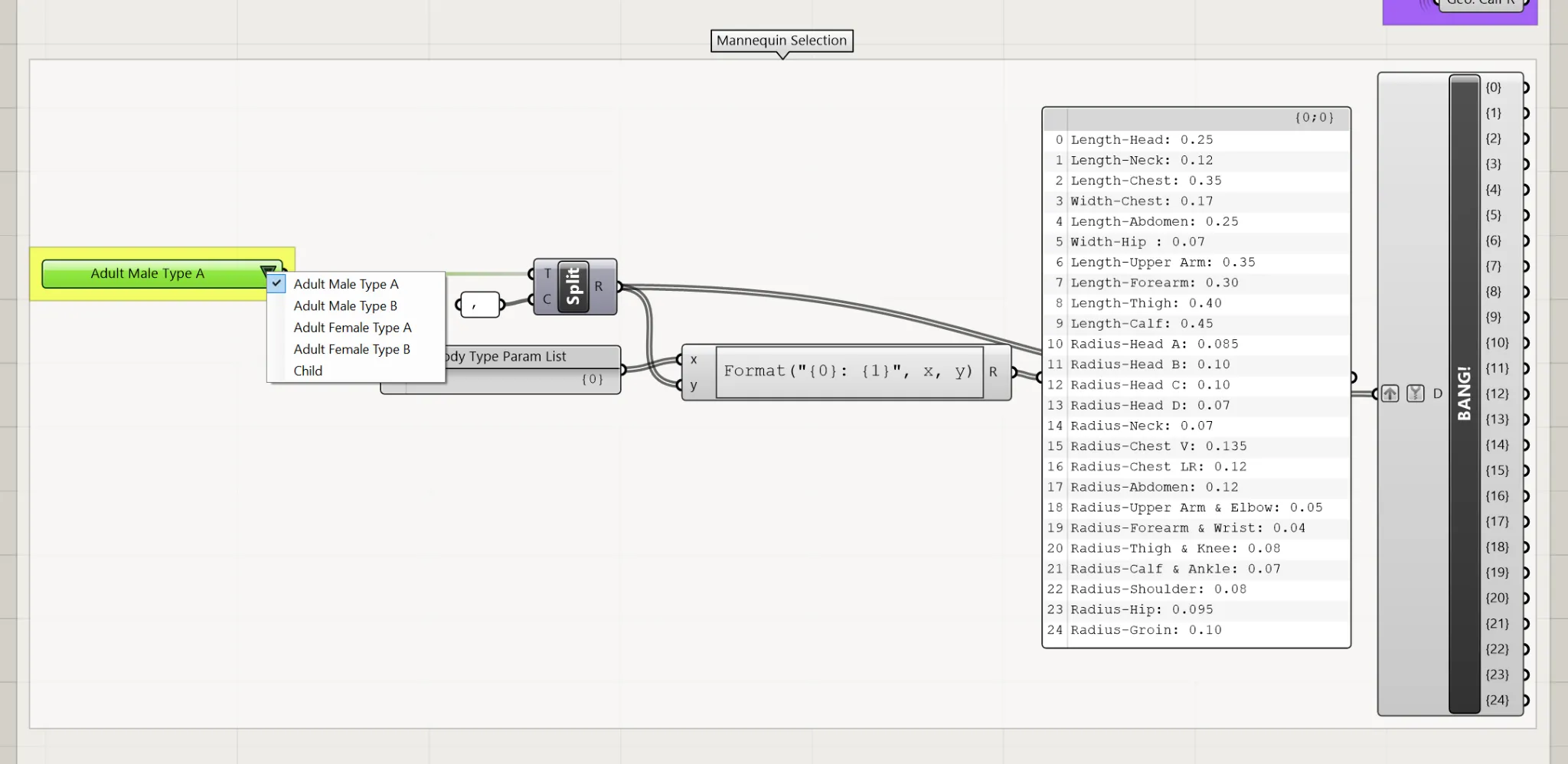
Fig 6. Using csvs and the Value List node, users are able to select or create different body type sets.

Fig 7. For the MVP, we provide five different body types for testing.
III. Existing surface matching
Manav also supports workflows based on analyzing existing designs. In this case, the mannequin must arrange itself to match an existing surface, so that the analysis part can proceed with the most natural posture for that piece of furniture.
IV. Output format
The Manav component will output every body joint as a point, every limb as a line, and also every body part's preview visualization BREP, making it easy for the generative design process to leverage any data type that is most convenient.
Part II: Posture-Based Furniture Generation
Once we have the basic posture and body type parameters, we will be able to output them as furniture design references or put them in various posture-based furniture generators to explore different design approaches. Currently, Manav supports three generation methods:

Fig 8. Natural-form chair generated from key body points.

Fig 9. Self-adaptable chair using evolutionary algorithm.

Fig 10. Stamping-molded chair following the human body surface.
I. Assembly Furniture
Utilizing parameterized posture rigging in Grasshopper, we have developed several types of generative furniture, including assembled furniture. In this initial application, we use Manav to design a chair that perfectly integrates natural form with comfort and meets ergonomic standards.
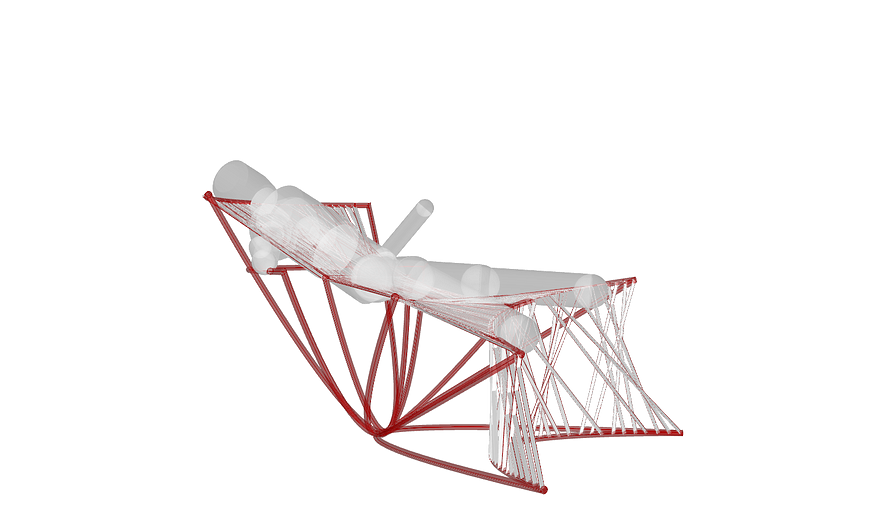
Fig 11.1. Posture A.

Fig 11.2. Posture B.
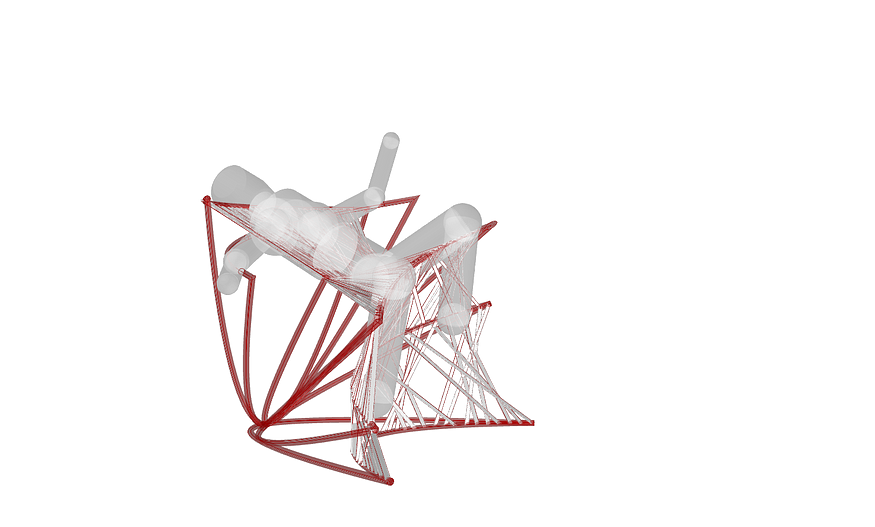
Fig 11.3. Posture C.
II. Adaptive Furniture
As an alternative approach to the procedurally generated chair designs, we are also exploring a design that can adapt itself to various postures. A user could use an interface to specify the ideal posture they desire, and the chair would change its configuration to the most suitable.
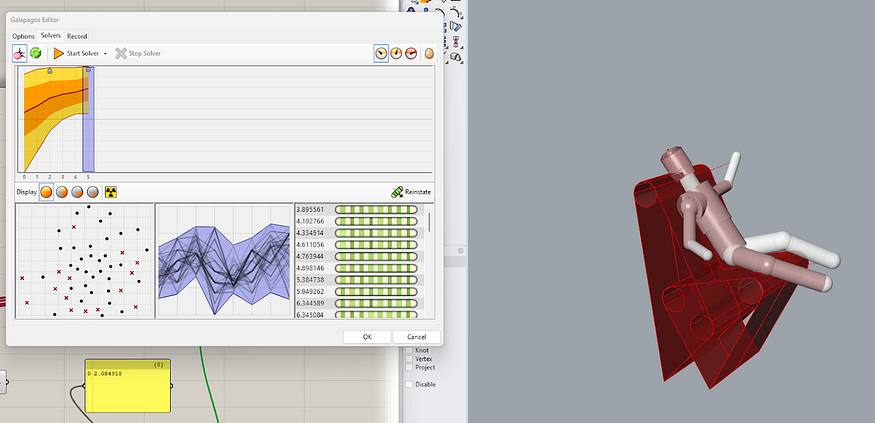

Fig 12. Adaptive Furniture.
III. Soft-body Furniture
The furniture design focuses on creating a soft body version of a chair that adapts to the user's body, offering a modular and customizable seating experience. Inspired by the traditional Eames plastic chair, this design emphasizes flexibility and support through a responsive surface.
Part III: Analysis
Once the furniture design is generated — or if an existing furniture piece is used — the analysis starts by extracting the chair's surface geometry. Using an optimized posture, points from the body are compared with the chair's surface to identify areas of closest contact.

Fig 13. Furniture Analysis.
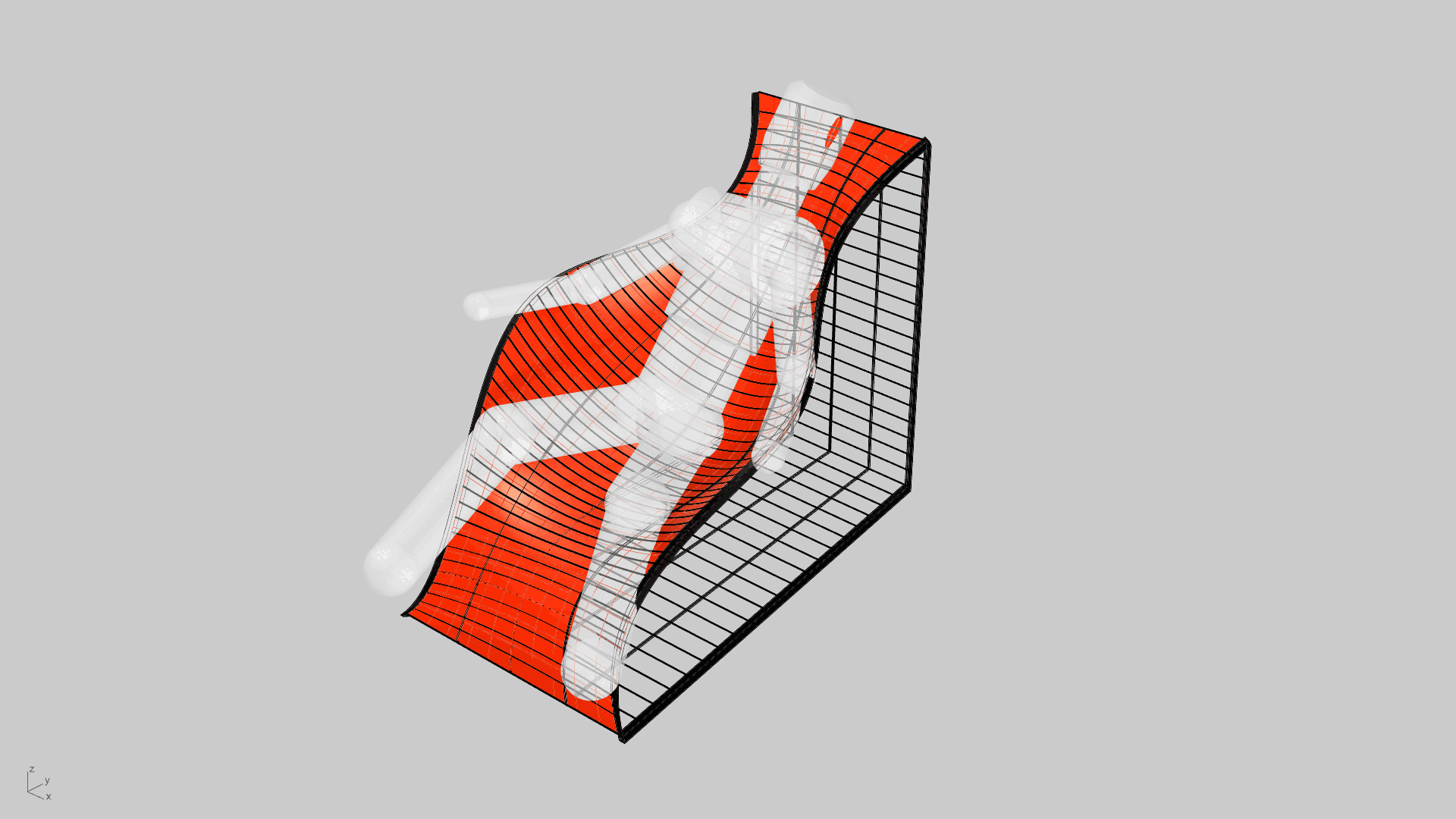
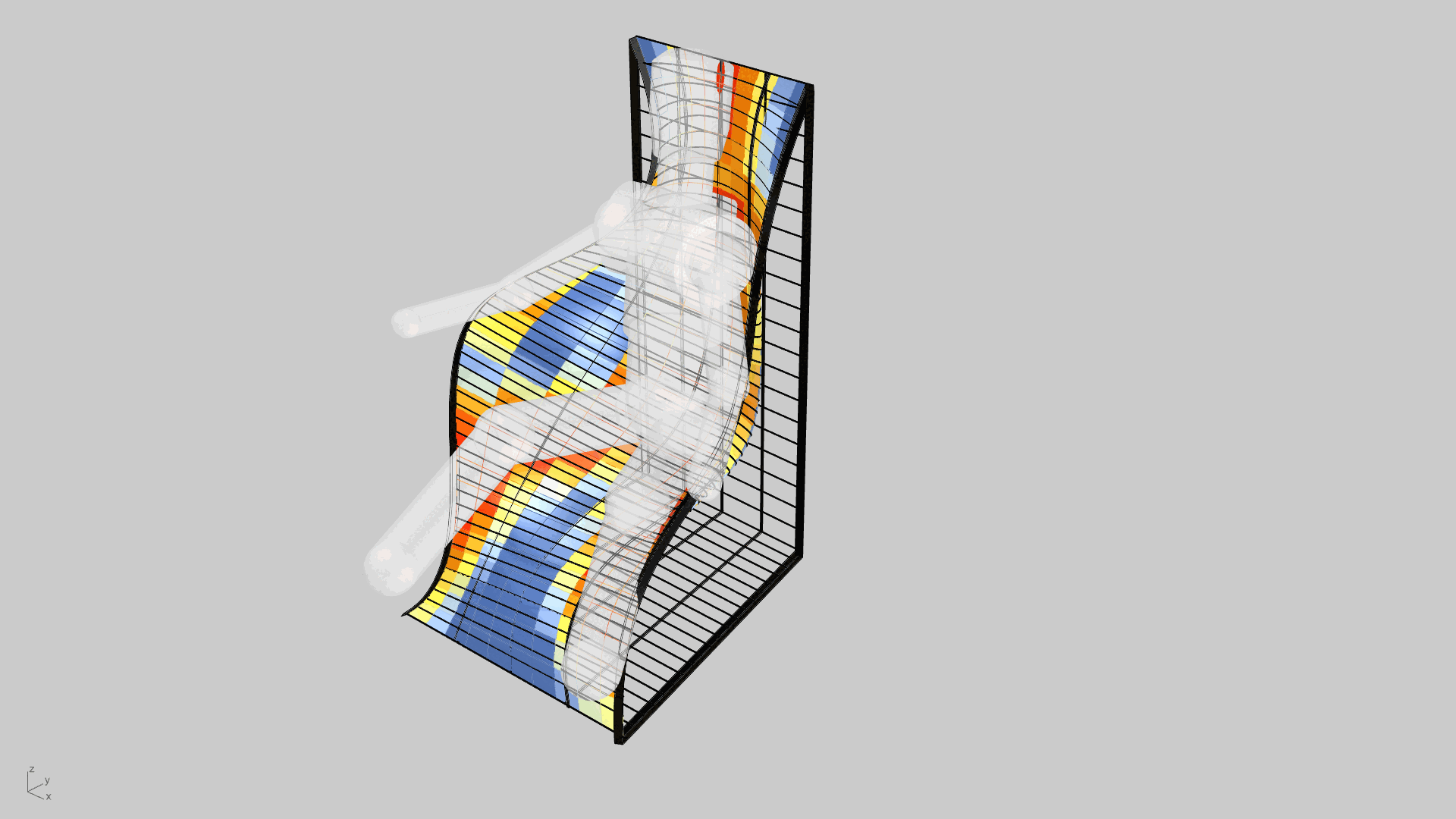
Fig 14. Load displacement.
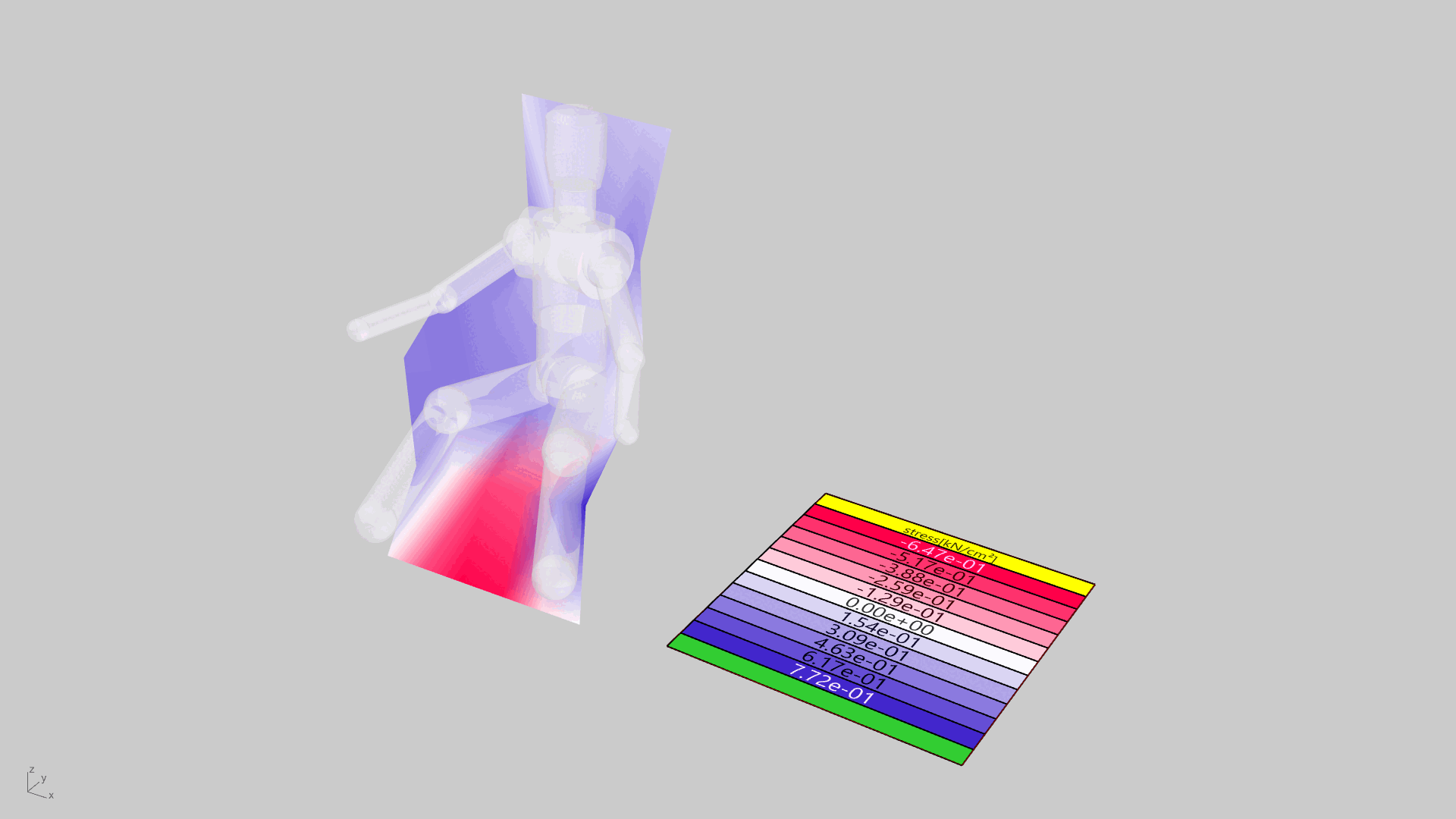
Fig 15. Equivalent load stress.
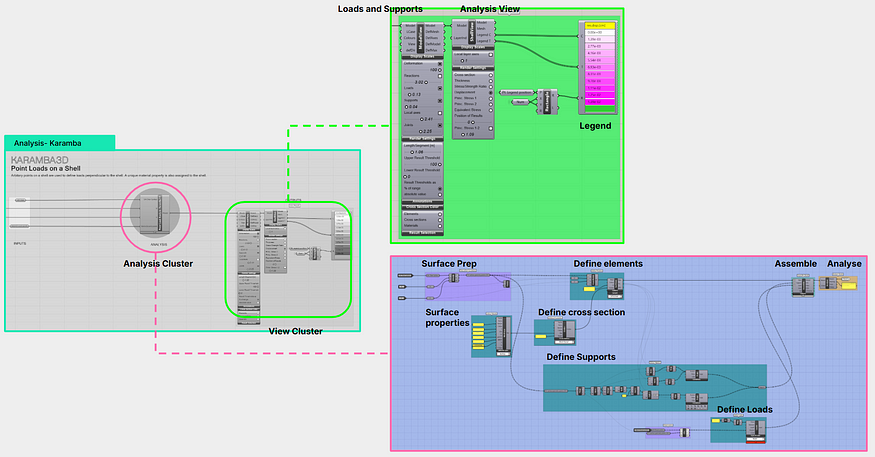
Fig 16. Script
These proximity zones are visualized with a gradient: red indicates areas where the chair is closest to the body, while blue highlights regions that are further away. This gradient-based visualization provides insights into how well the chair conforms to the body, identifying pressure points and ensuring ergonomic support.
References
Piker, D. (2019, August 13). Inverse kinematics post #2. McNeel Forum. https://discourse.mcneel.com/t/inverse-kinematics/87440/2
Rietveld Landscape, R. (2024a, October 31). The End of Sitting. https://www.raaaf.nl/en/projects/927_the_end_of_sitting